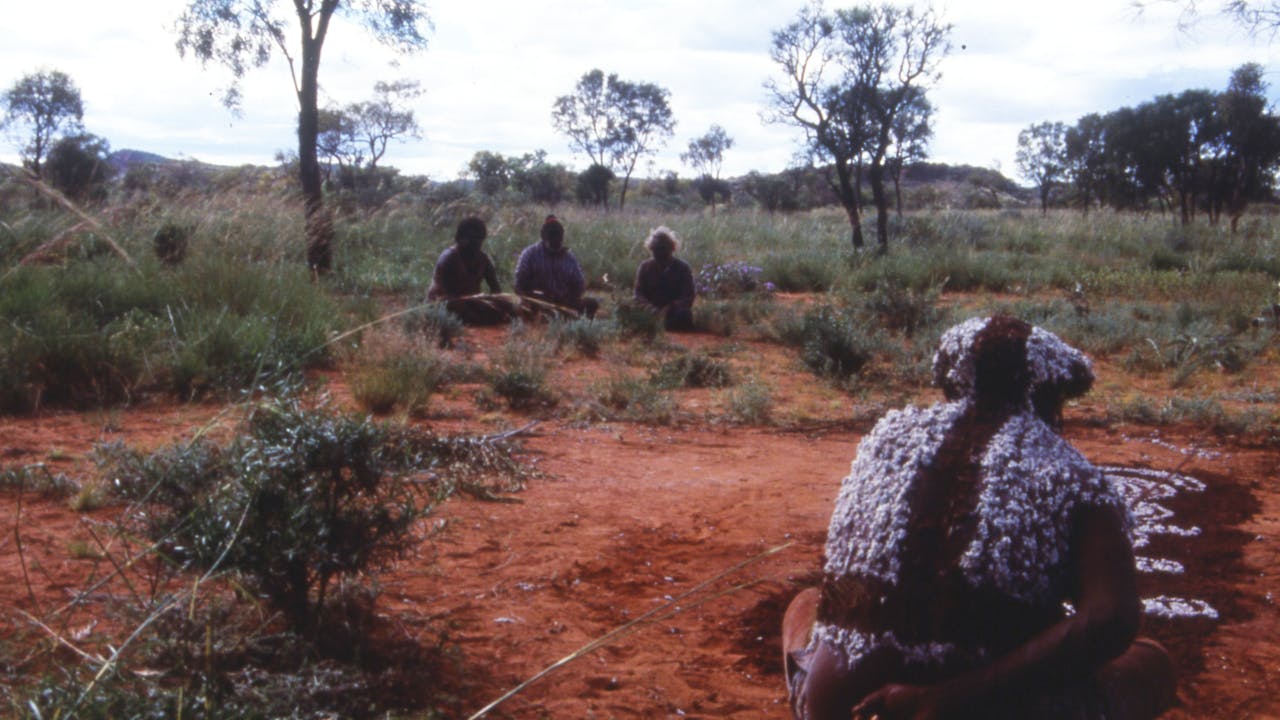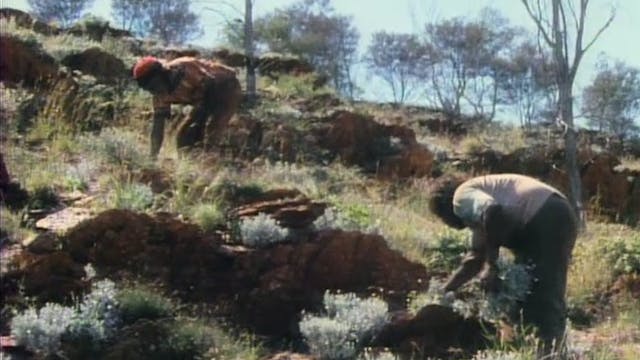The Giant Woman and the Lightning Man
Philip Haas’s eye-popping film on Australian Aboriginal art, takes us through the steps of preparing three ground paintings made by a group of desert tribesman. The film shows the collective effort and cooperation required to make the art. The beauty of the finished pieces — so ancient and so modern — is stunning. The northern Australian Aboriginal bark painters’ “studio” and “gallery” are dramatically different from that of the desert people. Here, making art is a solitary activity. Haas follows two brothers as they painstakingly prepare their bark canvasses and brushes and then paint two pieces. Both northern and desert Aborigines include body painting as part of their art, and the men perform ritual dances accompanied by Aboriginal musical instruments.
In Yuendumu: Paddy Japarljarri Sims, Bronson Jakamarra Nelson, Paddy Japarljarri Stewart, Francis Juparrula Kelly, Paddy Juparrula Nelson, Neville Japangardi Poulson, Dinny Japarljarri France, and Darby Jampijinpa Ross. In Maningrida: John Mawandjul and James Iyuna.
A film by Philip Haas. Executive Producer: Fernando Trueba. Produced by Fernando Trueba, P.C. S.A.; Methodact, Ltd.; and the Centre George Pompidou. Edited by Belinda Cowdy. Music by David Byrne. Narration by Philip Haas. Cinematography by Tony Wilson. Sound by Graham Wyse.
-
Giant Woman And The Lightning Man, The
Philip Haas’s eye-popping film on Australian Aboriginal art, takes us through the steps of preparing three ground paintings made by a group of desert tribesman. The film shows the collective effort and cooperation required to make the art. The beauty of the finished pieces — so ancient and so mod...


